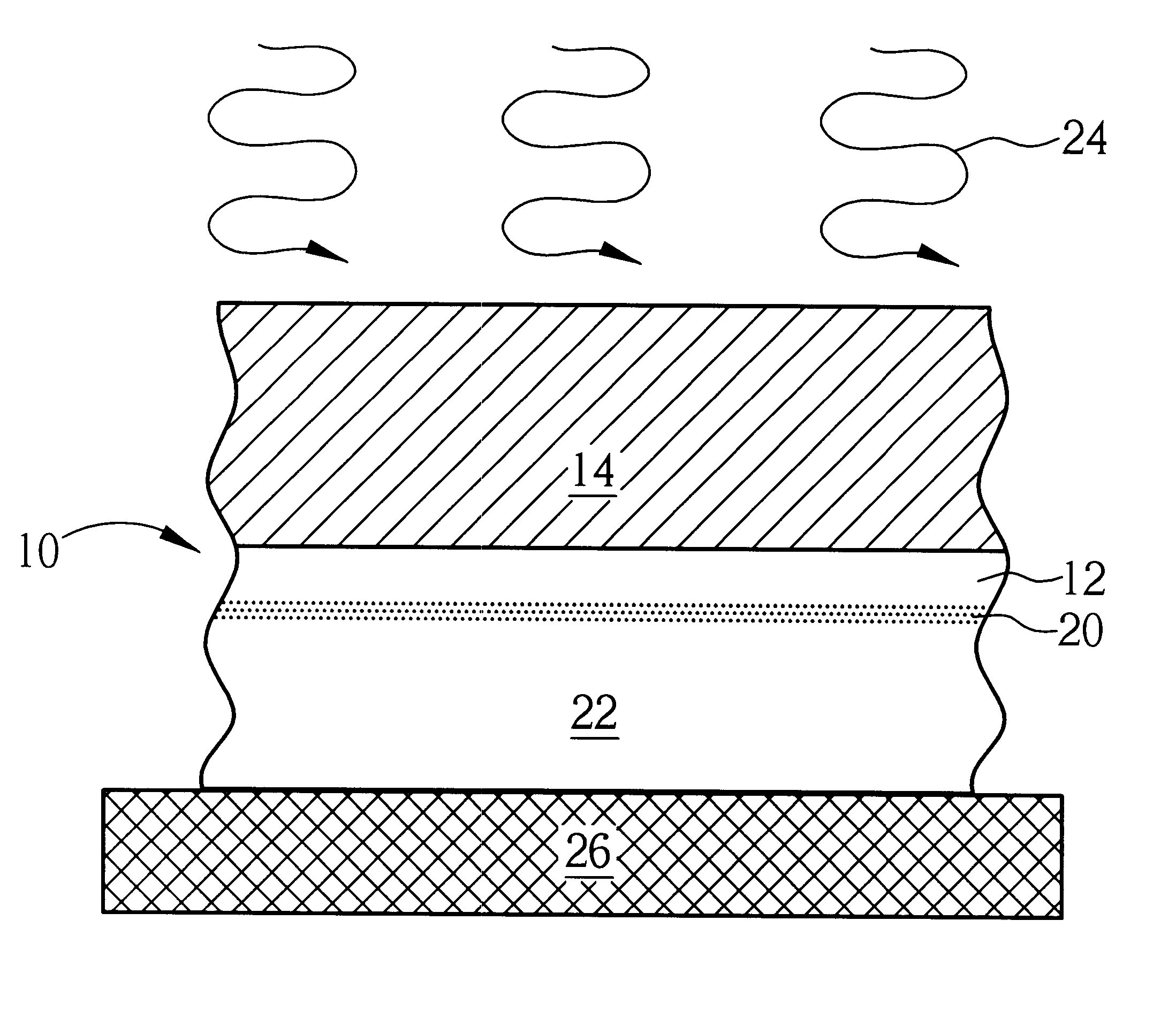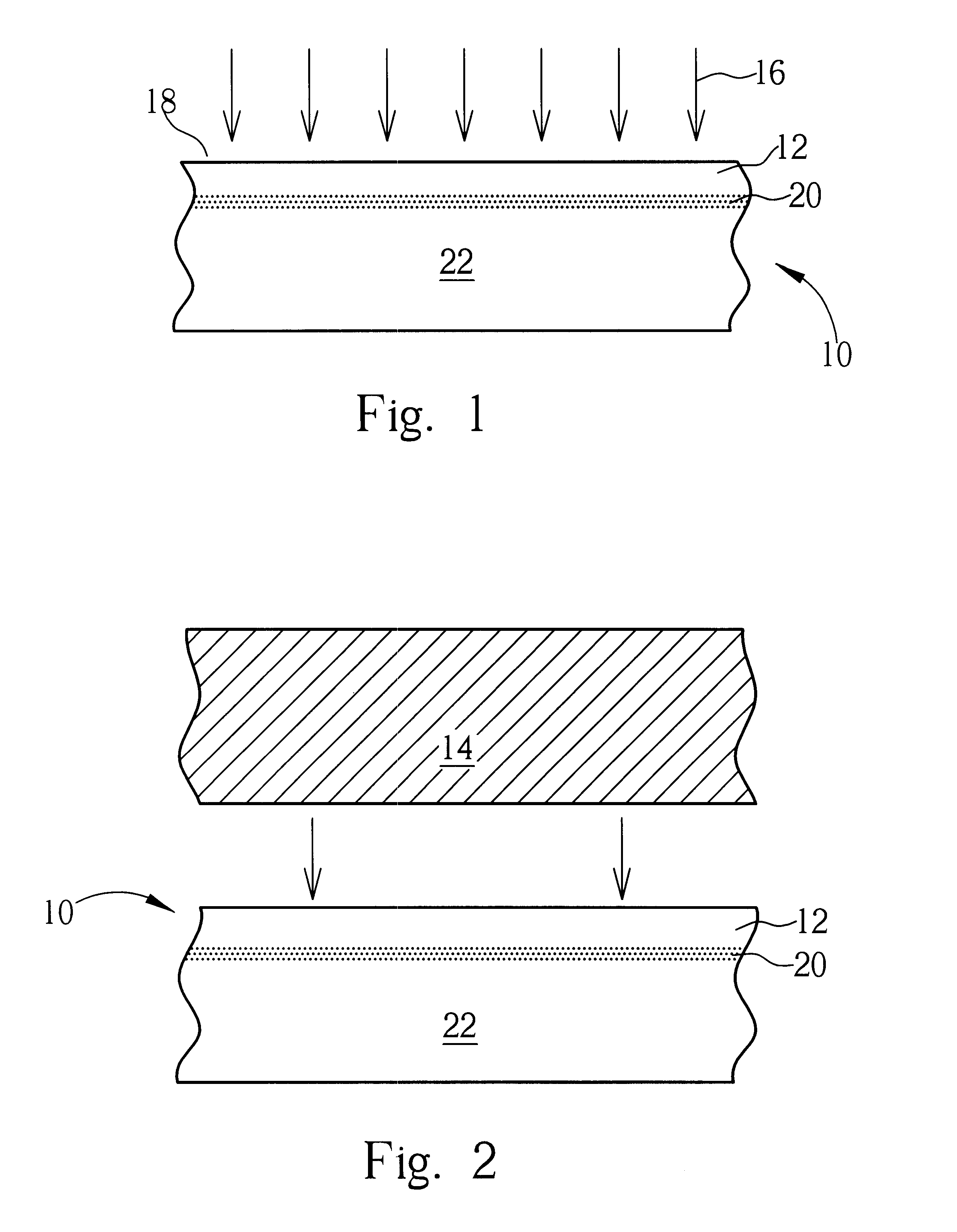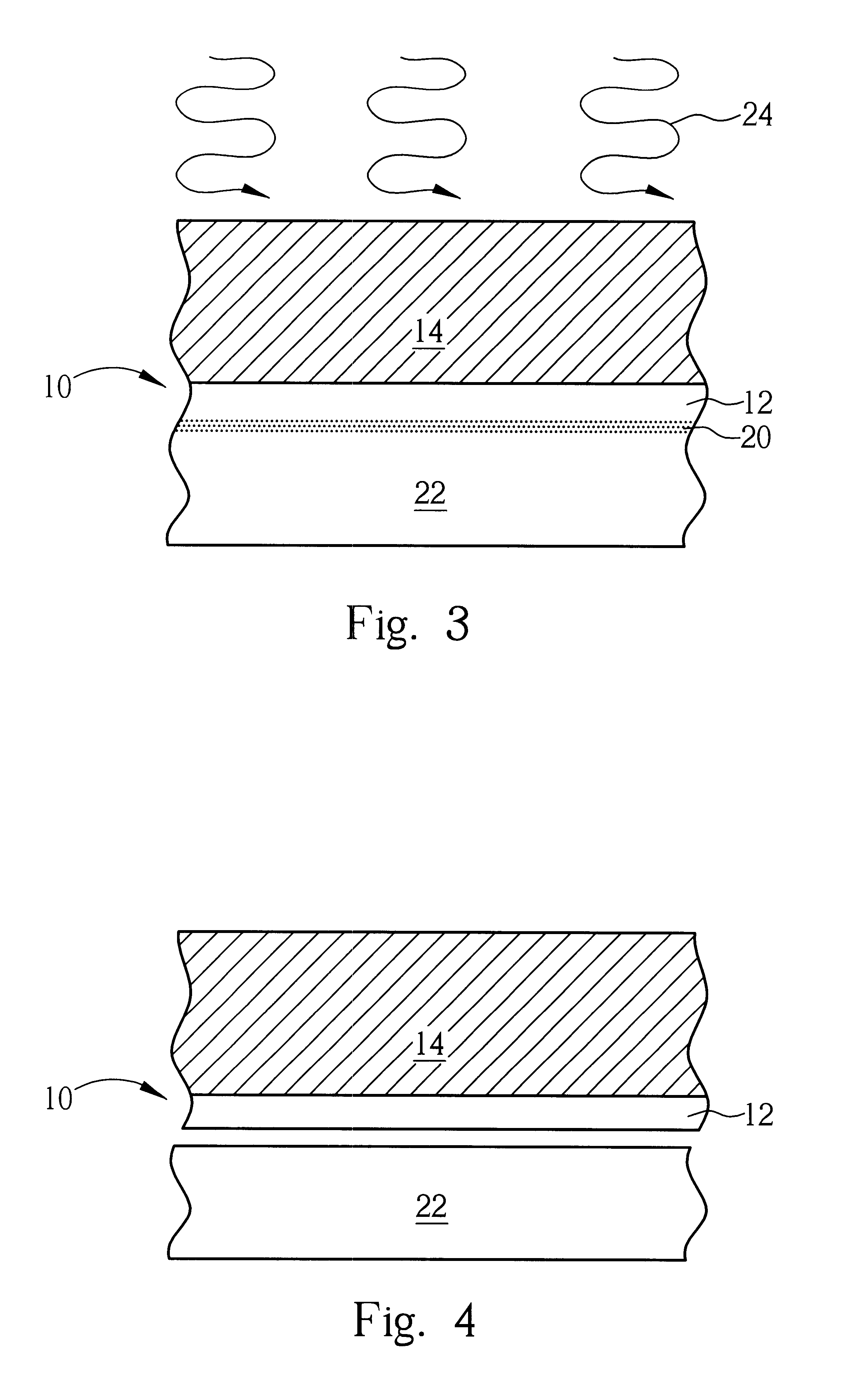Manufacturing method of a thin film on a substrate
- Summary
- Abstract
- Description
- Claims
- Application Information
AI Technical Summary
Benefits of technology
Problems solved by technology
Method used
Image
Examples
first embodiment
The first embodiment shows that the kinetic energy of the implanted ions or ionic molecules in the ion separation layer is excited with electromagnetic irradiation, in this case microwave irradiation, in achieving layer transfer.
In the first embodiment, the supply substrate is a p-type, one side polishing, (100), and 15-25 ohm-cm silicon wafer. The surface of the supply substrate is covered with silicon nitride (Si.sub.3 N.sub.4) of 1500 .ANG. thick and silicon dioxide of 500 .ANG. thick under the silicon nitride layer. 3.5.times.10.sup.16 atoms / cm.sup.2 of hydrogen ions with energy 200 KeV is implanted into the substrate. The demanded substrate is a p-type, one side polishing, (100), and 15-25 ohm-cm silicon wafer. The two wafers are bonded by low temperature wafer bonding method first and the bonded pair is placed in a microwave setup and irradiated at 2.45 GMz for five minutes. Then a silicon thin film of about 0.75 .mu.m thick is separated from the supply substrate and transferr...
second embodiment
In the second embodiment, the supply substrate is a p-type, one side polishing, (100), and 15-25 ohm-cm silicon wafer. The surface of the supply substrate is covered with silicon nitride (Si.sub.3 N.sub.4) of 1500 .ANG. thick and silicon dioxide of 500 .ANG. thick under the silicon nitride layer. 3.5.times.10.sup.16 atoms / cm.sup.2 of hydrogen ions with energy 200 KeV is implanted into the supply substrate. The demanded substrate is a p-type, one side polishing, (100), and 15-25 ohm-cm silicon wafer. The two wafers are bonded by low temperature wafer bonding method first and the bonded pair is placed in a microwave setup with a cooler to keep the irradiating temperature no greater than 400.degree. C., and is irradiated at 2.45 GMz for five minutes. Then a silicon thin film of 0.75 .mu.m thick is separated from the supply substrate and transferred to the demanded substrate, resulting in a SOI wafer with an insulation layer of silicon nitride.
third embodiment
In the third embodiment, the supply substrate is a p-type, one side polishing, (100), and 15-25 ohm-cm silicon wafer. Hydrogen molecular ions are implanted twice. On the first implantation, 1.5.times.10.sup.16 atoms / cm.sup.2 of hydrogen molecular ion with energy 200 KeV is implanted into the substrate at 550.degree. C. On the second implantation, 4.times.10.sup.16 atoms / cm.sup.2 of hydrogen molecular ion with energy 200 KeV is implanted into the substrate at room temperature. The demanded substrate is a glass wafer with one polished side. The two wafers are bonded with low temperature wafer bonding method into a bonded structure and then the bonded structure is placed in a microwave oven and irradiated at 2.45 GMz for five minutes. Then a silicon thin film of 0.75 .mu.m thick is separated from the supply substrate and transferred to the demanded substrate, resulting in a SOI wafer with a main body of glass substrate.
In the forth embodiment, the supply substrate is a p-type, one side...
PUM
 Login to View More
Login to View More Abstract
Description
Claims
Application Information
 Login to View More
Login to View More - R&D
- Intellectual Property
- Life Sciences
- Materials
- Tech Scout
- Unparalleled Data Quality
- Higher Quality Content
- 60% Fewer Hallucinations
Browse by: Latest US Patents, China's latest patents, Technical Efficacy Thesaurus, Application Domain, Technology Topic, Popular Technical Reports.
© 2025 PatSnap. All rights reserved.Legal|Privacy policy|Modern Slavery Act Transparency Statement|Sitemap|About US| Contact US: help@patsnap.com



